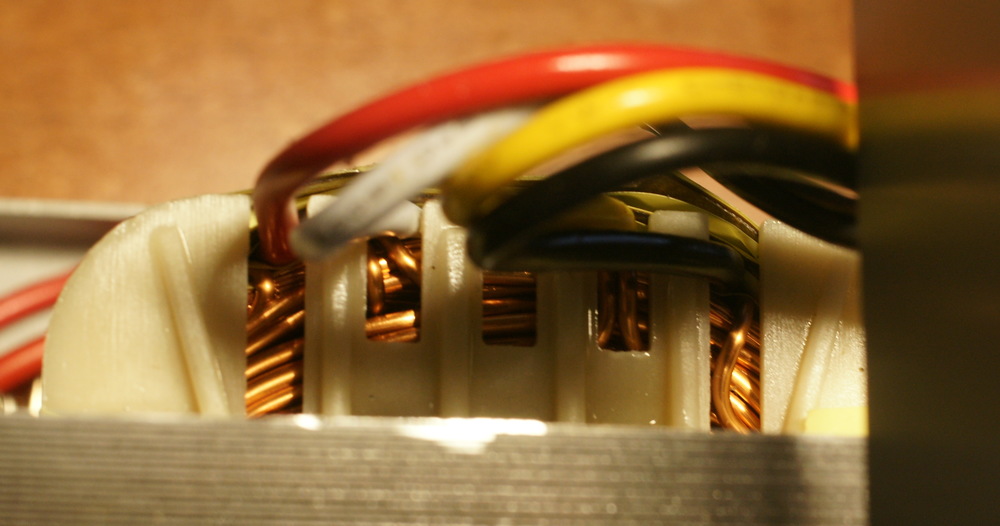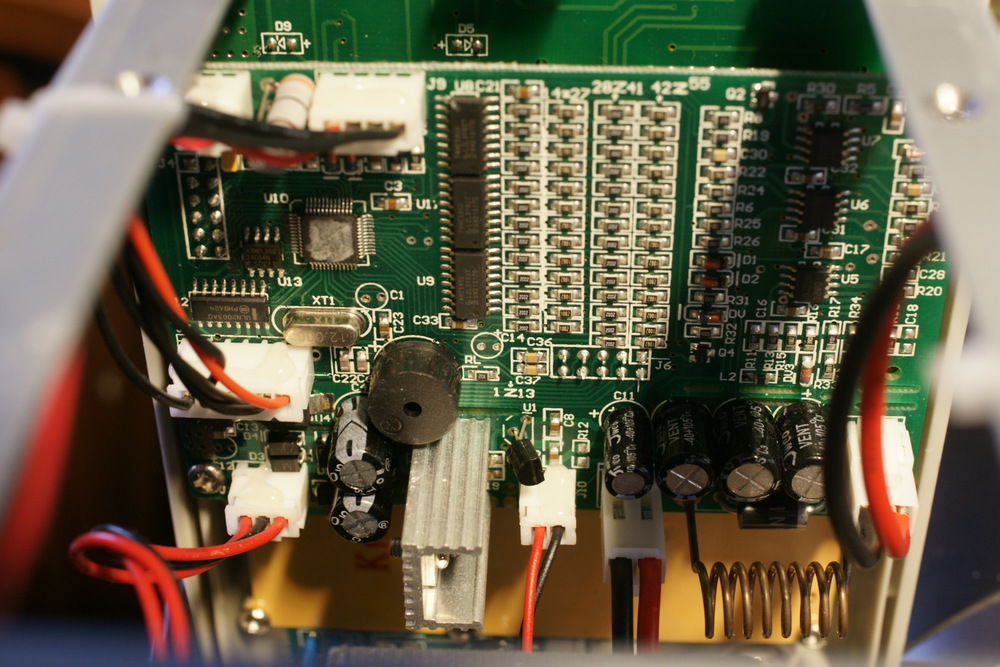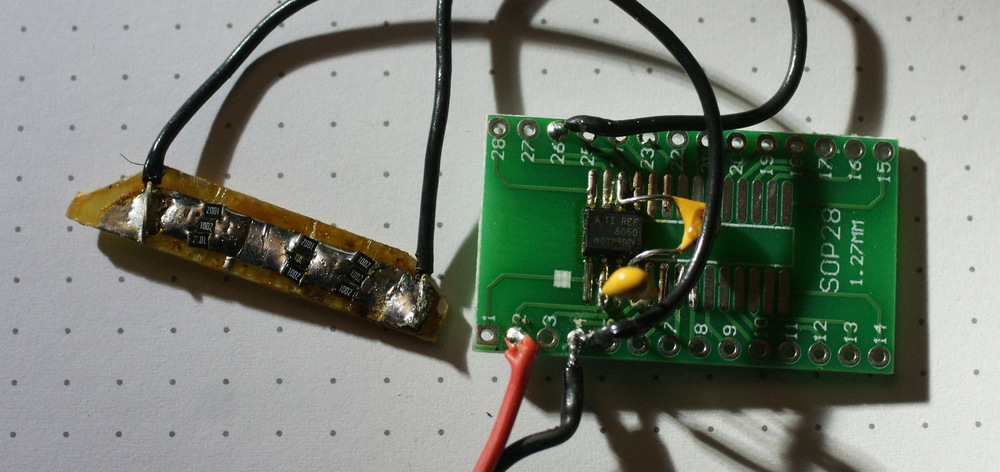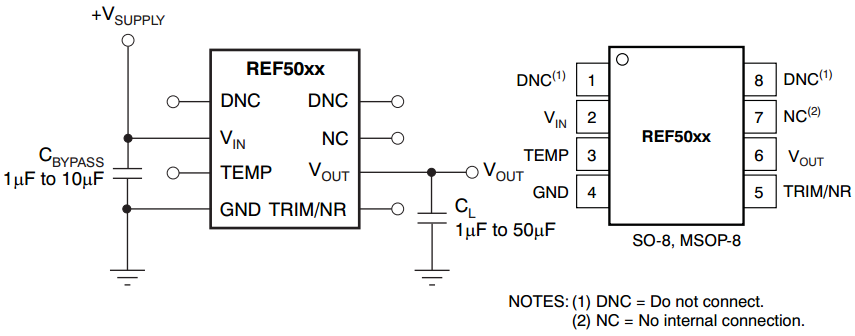UnionTest / KORAD UT3005EP Laboratory Programmable Linear Power Supply and Calibration / Control
Recently I bought a UnionTest UT3005EP laboratory power supply (31V 5.1A), this is another name for the famous KORAD power supply - a purebred Chinese. Again, the original Chinese development, not an unfinished copy. The first revisions of the blocks of this series (~ 2012) had drawbacks (in particular, at maximum current - power transistors could overheat, this was found in the eevblog video blog), but they were later fixed. Personally, I have a weakness for 4-bit LED indicators - therefore, my choice fell on UnionTest / KORAD power supplies, taking into account the fact that it showed itself well in tests of a revised revision.
At first, out of habit, I ordered the unit directly from China, but it didn’t reach me (the money was returned) - and then I saw that UnionTest was being sold in Moscow stores at about the same price (5210 rubles for this model) - at first glance KORAD with a different name. However, the question remains: are they accidentally selling out the old revision of iron? I bought a block, and we'll look at the insides now. Looking ahead - a new revision.

There are no complaints about the operation of the unit, the accuracy of indicators without calibration is about 1-2% (you can calibrate to <0.5%, more on that below). You can save 5 presets, the first 4 buttons, the 5th - is switched on with the M4 button + the wheel to the right. M5 settings are saved automatically.
Video reviews: the original eevblog of the old revision (with measurements, the fail-part is fixed),Overview of revised revision changes .
The power supply is linear - this provides minimal noise, but requires a huge transformer. From the transformer there are several high-current taps - the relays switch the transformer windings in the ranges 0-7V, 7-14, 14-21, 21-31V. This is necessary so that too much power is not dissipated on the linear stabilizer for low voltages. For a circuit with 4 ranges, the heat release in the worst case is about 40 watts (5A * ~ 8V). There are also several low-current windings - bipolar power for the control circuit, and unipolar power for the PC interface card. The voltage is regulated from zero - accordingly, you can turn on 0.05V 5A :-)

The diameter of the transformer winding wire inspires confidence:

Power electronics board. This is a new revision with a fixed overheating problem - it can withstand short circuits and 5A current for a long time without problems. The fan speed is controlled automatically depending on the calculated power output (and not the temperature) - the fan increases the speed immediately after switching on the "heavy mode". At low load, it rotates slowly and is almost inaudible. Capacitors after the diode bridge - 3x2200 microfarads, voltage with a margin.

On the control board, a 13 + 14 bit (current + voltage) R-2R DAC controlled by shift registers 74HC595 is striking.

Communication board with computer - opto-isolated + separate power supply with galvanic isolation. An additional common-mode interference filter is visible in the upper left part of the board - another sign of a new revision of iron.

The conclusions allow connection in 3 ways - “wire into the hole and pinch”, “wire around and pinch”, insert the “banana” connector (banana-plug):

Calibrate multimeter:To do this, you need an accurate voltage source - I decided to quickly assemble it myself, based on the exact voltage source REF5050, which produces 5V with an accuracy of no worse than 0.1%. Since my multimeter has a maximum display value of 1999 - 5V will give a little accuracy. Because of the resistor divider from 0.1% of resistors (with averaging of 3 resistors) I divide it 3 times - and get a voltage of 1.666V. Then you need to find a tuning resistor that adjusts the reference voltage inside the multimeter. In my case, Google helped me with the Uni-T UT70A .


Calibrate the power supply: Turn on the device and wait 2 minutes for warming up. Turn off, and turn on with the M4 button held down, then 4 stages of calibration:
1) 0 voltage: measure the voltage with a multimeter, and turn the wheel until it is as close to zero as possible. Click M1 to save. Click Voltage / Current for the next stage.
2) 0 current: turn the wheel until there is 0 mA current, press M1 to save. Press M4 to proceed to the next step.
3) Maximum voltage: turn the wheel until the voltage is exactly 30V. Click M1 to save. Click Voltage / Current for the next stage.
4) Maximum current: turn the wheel until there is a current of 5A. Click M1 to save.
5) Turn off and turn on the device - calibration is completed.
If at one of the steps you do not save the calibration result, the device may then display incorrectly, in which case you will need to repeat the calibration.
PS. The unit has been at maximum load for a long time in the thermal imager (removed by TRIO_Smartcal), the temperatures are quite modest:

Update: Suddenly , the KORAD unit arrived - an inspection of the insides confirmed that there were no differences between them.
At first, out of habit, I ordered the unit directly from China, but it didn’t reach me (the money was returned) - and then I saw that UnionTest was being sold in Moscow stores at about the same price (5210 rubles for this model) - at first glance KORAD with a different name. However, the question remains: are they accidentally selling out the old revision of iron? I bought a block, and we'll look at the insides now. Looking ahead - a new revision.

There are no complaints about the operation of the unit, the accuracy of indicators without calibration is about 1-2% (you can calibrate to <0.5%, more on that below). You can save 5 presets, the first 4 buttons, the 5th - is switched on with the M4 button + the wheel to the right. M5 settings are saved automatically.
Video reviews: the original eevblog of the old revision (with measurements, the fail-part is fixed),Overview of revised revision changes .
The power supply is linear - this provides minimal noise, but requires a huge transformer. From the transformer there are several high-current taps - the relays switch the transformer windings in the ranges 0-7V, 7-14, 14-21, 21-31V. This is necessary so that too much power is not dissipated on the linear stabilizer for low voltages. For a circuit with 4 ranges, the heat release in the worst case is about 40 watts (5A * ~ 8V). There are also several low-current windings - bipolar power for the control circuit, and unipolar power for the PC interface card. The voltage is regulated from zero - accordingly, you can turn on 0.05V 5A :-)

The diameter of the transformer winding wire inspires confidence:

Power electronics board. This is a new revision with a fixed overheating problem - it can withstand short circuits and 5A current for a long time without problems. The fan speed is controlled automatically depending on the calculated power output (and not the temperature) - the fan increases the speed immediately after switching on the "heavy mode". At low load, it rotates slowly and is almost inaudible. Capacitors after the diode bridge - 3x2200 microfarads, voltage with a margin.

On the control board, a 13 + 14 bit (current + voltage) R-2R DAC controlled by shift registers 74HC595 is striking.

Communication board with computer - opto-isolated + separate power supply with galvanic isolation. An additional common-mode interference filter is visible in the upper left part of the board - another sign of a new revision of iron.

The conclusions allow connection in 3 ways - “wire into the hole and pinch”, “wire around and pinch”, insert the “banana” connector (banana-plug):

Remote control
Communication module with a computer - increases the cost by ~ 650 rubles. You can control it via USB and RS232, there is a management program for Windows. The control protocol is known, so for example, you can do some automatic tests, even controlling the unit from the microcontroller. You can see the results of measuring the current current / voltage. COM port settings: 9600-8-N. The commands are as follows:You do not need to type the end of line character (Enter). Also, the power supply does not return an echo of commands (in the terminal you will not see what you are typing).VSET1: 1.20 ISET1: 0.25 ISET1? VSET1? IOUT1? VOUT1? * IDN? OCP0 / OCP1 OVP0 / OVP1 OUT0 / OUT1 STATUS?
Calibration
Naturally, getting the correct 4 significant digits for current / voltage is not easy, and will require calibration. The out of the box block was about 1-2% wrong. Before calibrating the power supply - you need to calibrate the multimeter, if it cost less than $ 100 - it can easily have an error of more than 1%.Calibrate multimeter:To do this, you need an accurate voltage source - I decided to quickly assemble it myself, based on the exact voltage source REF5050, which produces 5V with an accuracy of no worse than 0.1%. Since my multimeter has a maximum display value of 1999 - 5V will give a little accuracy. Because of the resistor divider from 0.1% of resistors (with averaging of 3 resistors) I divide it 3 times - and get a voltage of 1.666V. Then you need to find a tuning resistor that adjusts the reference voltage inside the multimeter. In my case, Google helped me with the Uni-T UT70A .


Calibrate the power supply: Turn on the device and wait 2 minutes for warming up. Turn off, and turn on with the M4 button held down, then 4 stages of calibration:
1) 0 voltage: measure the voltage with a multimeter, and turn the wheel until it is as close to zero as possible. Click M1 to save. Click Voltage / Current for the next stage.
2) 0 current: turn the wheel until there is 0 mA current, press M1 to save. Press M4 to proceed to the next step.
3) Maximum voltage: turn the wheel until the voltage is exactly 30V. Click M1 to save. Click Voltage / Current for the next stage.
4) Maximum current: turn the wheel until there is a current of 5A. Click M1 to save.
5) Turn off and turn on the device - calibration is completed.
If at one of the steps you do not save the calibration result, the device may then display incorrectly, in which case you will need to repeat the calibration.
Summary
For my money (~ 5210 rubles already in Moscow), taking into account the availability of digital calibration, the well-known control protocol and resolved childhood diseases, this is more than an excellent device, almost out of competition.PS. The unit has been at maximum load for a long time in the thermal imager (removed by TRIO_Smartcal), the temperatures are quite modest:

Update: Suddenly , the KORAD unit arrived - an inspection of the insides confirmed that there were no differences between them.
